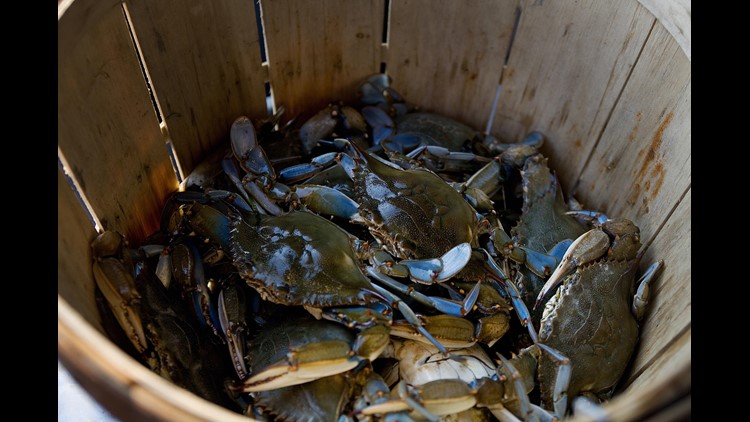Though the last two years have shown growth, overall crab population in Chesapeake Bay is now declining.
A report released June 26 confirms that while the 2017 overall population of adult female blue crabs in the Chesapeake Bay was higher than the original target, the overall population of the species declined.
The estimated 2017 population of 254 million adult females was higher than the target of 215 million set by the Chesapeake Bay Watershed Agreement. According to the Blue Crab Advisory Report, target levels are considered healthy, and threshold levels mark the border between healthy and unhealthy levels.
However, the Chesapeake Bay blue crab stock is not suffering from over fishing.
In 2016, 16 percent of all female crabs were harvested, below the target level of 25.5 percent and threshold levels of 34 percent. While numbers in adult female crabs in the Bay increased by 30 percent in 2017, the overall crab population fell by almost 18 percent from 553 million in 2016 to 455 million in 2017. Juvenile crabs also decreased by 54 percent from 2016 to 2017.
“The highly variable nature of blue crabs was on full display this past year,” said Glenn Davis, Chair, Chesapeake Bay Stock Assessment Committee and Maryland Department of Natural Resources. “The largest abundance of spawning females from the Winter Dredge Survey time series was great news, and demonstrated what can happen when jurisdictions adhere to science-based management."
"The low recruitment served as a reminder that large inter-annual fluctuations can be part of the norm and that managing blue crabs is a continuous challenge,” he added.
The Blue Crab Advisory Report recommends considering scaling back the fall fishering from last years’ more liberal regulations. The report explains this would protect more juvenile crabs, and give them the opportunity to give these crabs time to grow old enough to spawn next year.



